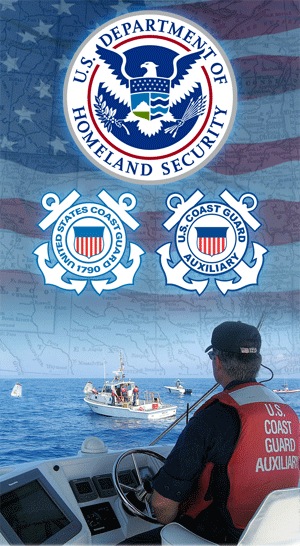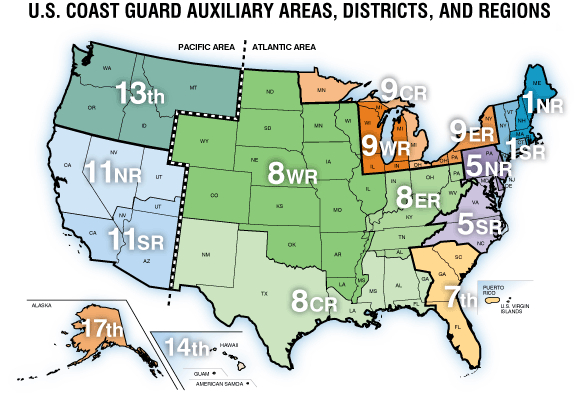Return to Flotilla 2-1's Home Page.

Agency Overview
Established by Congress in 1939 under the U.S. Code, the United States Coast Guard Auxiliary is Semper Paratus(Always Ready). We invite you to explore our site and learn more about who we are and what we do to be "Semper Paratus."
The Auxiliary operates in
- Safety and Security Patrols
- Search and Rescue
- Mass Causality or Disasters
- Pollution Response & Patrols
- Homeland Security
- Recreational Boating Safety
- Commercial Fishing and Vessel Exams
- Platforms for Boarding Parties
- Recruit for all service in the Coast Guard
In addition to the above, the U.S. Coast Guard Auxiliary operates in any mission as directed by the Commandant of the U.S. Coast Guard or Secretary of Homeland Security.
Our Mission
The overarching mission of the U.S. Coast Guard Auxiliary is to contribute to the safety and security of our citizens, ports, and waterways. We balance our missions of Recreational Boating Safety and Coast Guard Support with Maritime Homeland Security and other challenges that emerge as a result of a post-9/11 era.
Today's Missions
Today′s U.S. Coast Guard, with nearly 32,000 men and women, is a unique force that carries out an array of responsibilities touching almost every facet of the U.S. maritime environment.
The primary mission of the U.S. Coast Guard Auxiliary is Recreational Boater Safety.
We also have the mission to contribute to the safety and security of our citizens, ports, waterways and coastal regions, as directed by the United States Coast Guard.
National Strategic Plan
The U.S. Coast Guard Auxiliary's goals and strategies are to ensure the public has a safe, secure, and enjoyable recreational boating experience by implementing programs that minimize the loss of life, personal injury, and property damage while cooperating with environmental and national security efforts.
Organization
The Auxiliary has units in all 50 states, Puerto Rico, the Virgin Islands, American Samoa, and Guam.
Under the direct authority of the U.S. Department of Homeland Security via the Commandant of the U.S. Coast Guard, the Auxiliary is internally operating levels are broken down into four organizational levels: Flotilla, Division, District and National.
 National - The national staff officers are responsible, along with the Commandant, for the administration and policy-making for the entire Auxiliary.
National - The national staff officers are responsible, along with the Commandant, for the administration and policy-making for the entire Auxiliary.
District -The District provides administrative and supervisory support to Divisions, promotes policies of both the District Commander and National Committee.
Division - Flotillas in the same general geographic area are grouped into Divisions. The Division provides administrative, training and supervisory support to Flotillas and promotes District & National policy.
Flotilla - The Flotilla is the basic organizational unit of the Auxiliary and is comprised of at least 15 qualified members who carry out the day-to-day missions of "Team Coast Guard". Every Auxiliary members is part of a Flotilla.
Auxiliary History
When the Coast Guard "Reserve" was authorized by act of Congress on June 23,1939, the Coast Guard was given a legislative mandate to use civilian to promote safety on and over the high seas and the nation's navigable waters.
Two years later, on Feb. 19, Congress amended the 1939 act with passage of the Auxiliary and Reserve Act of 1941. Passage of this act designated the Reserve as a military branch of the active service, while the civilian section, formerly referred to as the Coast Guard Reserve, became the Auxiliary.
When we entered World War II, 50,000 Auxiliary members joined the war effort as military teams. Many of their private vessels were placed into service in an effort to protect the U.S.